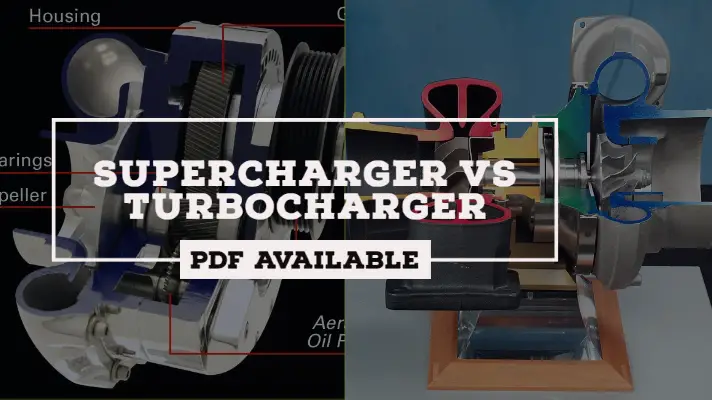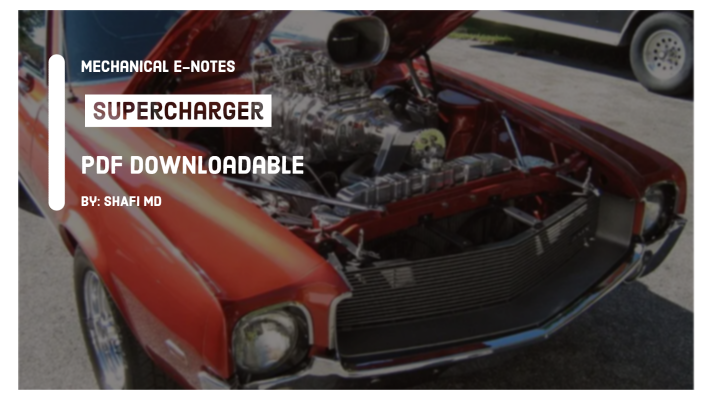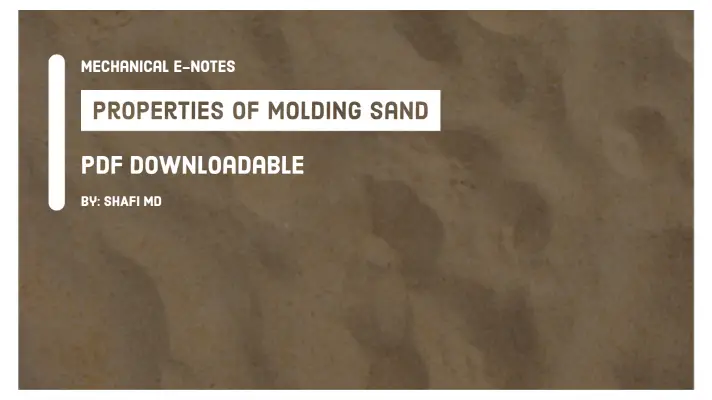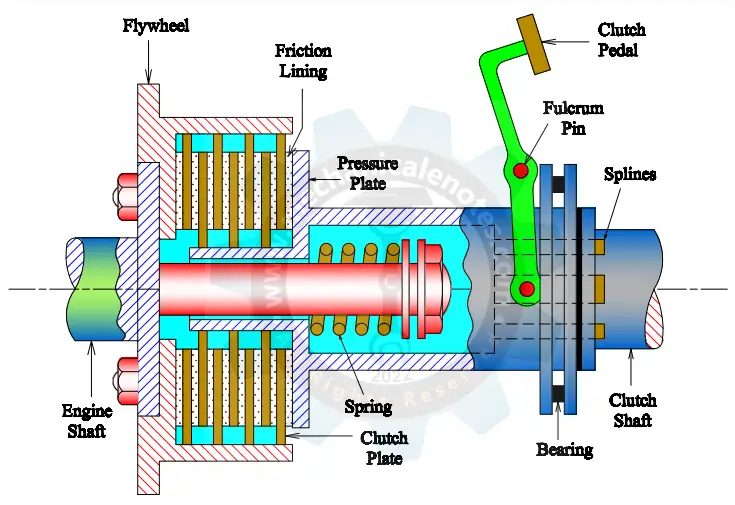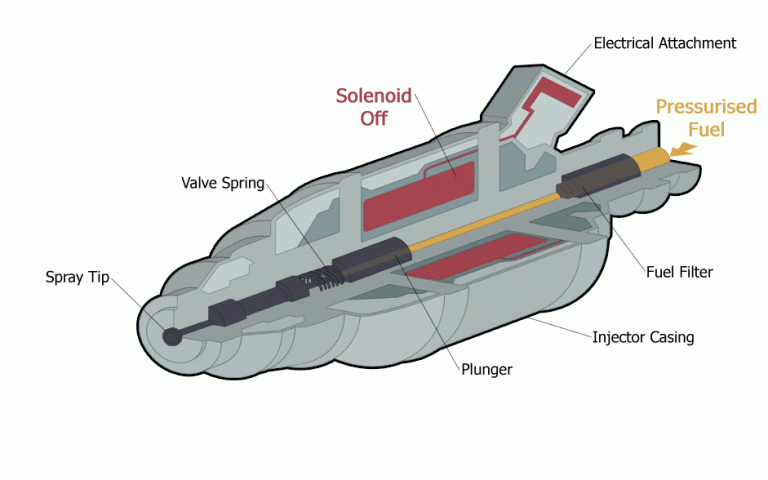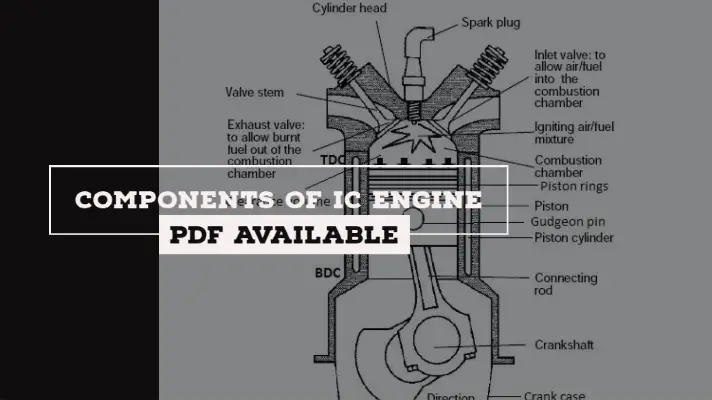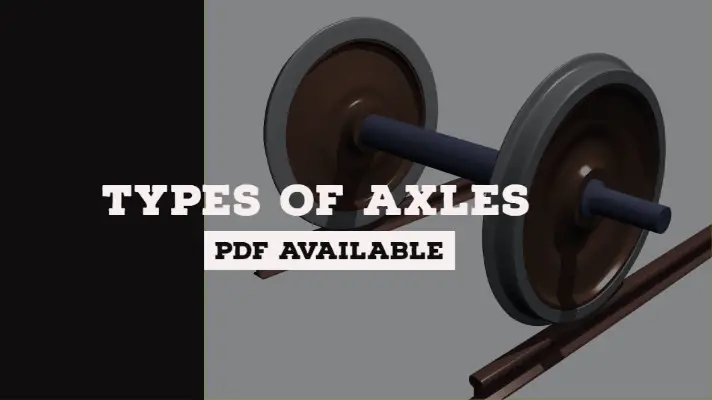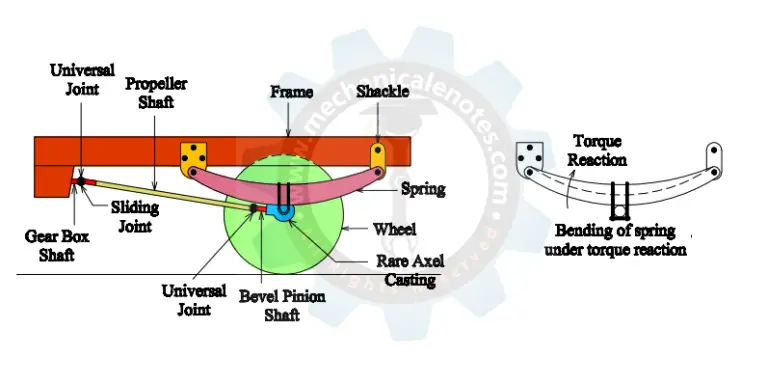[Notes] Wheels and Tyres: Definition, Types, Advantages, Disadvantages, and Applications [With PDF]
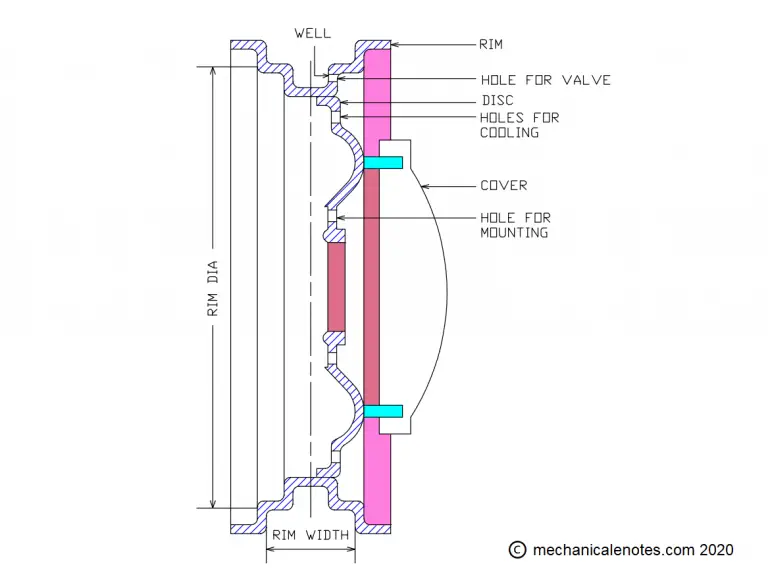
The wheels and tyres have to take the cushioning effect and the vehicle load so that they can cope up with the steering control. In today's article, I will discuss in detail about wheels and tyres along with its advantages, disadvantages and applications.
What is a Wheel?
A wheel is a circular object having a rim and a hub as the major parts revolve around an axle to enable it to move easily over the ground.
Types of Wheels:
There are 3 types of wheels, those are as follows:
- Pressed Steel Disc Wheel
- Wire Wheel
- Light Alloy Wheel
- Divided Rims Wheel
- Split Rims
The explanation for the types of wheels is as follows.
1. Pressed Steel Disc Wheel:
This type of disc wheel will be used by Majority of manufacturers all over the world.
This type of wheel consists of two parts. One is the steel Rim and the other is the Pressed steel disc.
In the figure shown below, the pressed steel disc is welded to the rim.
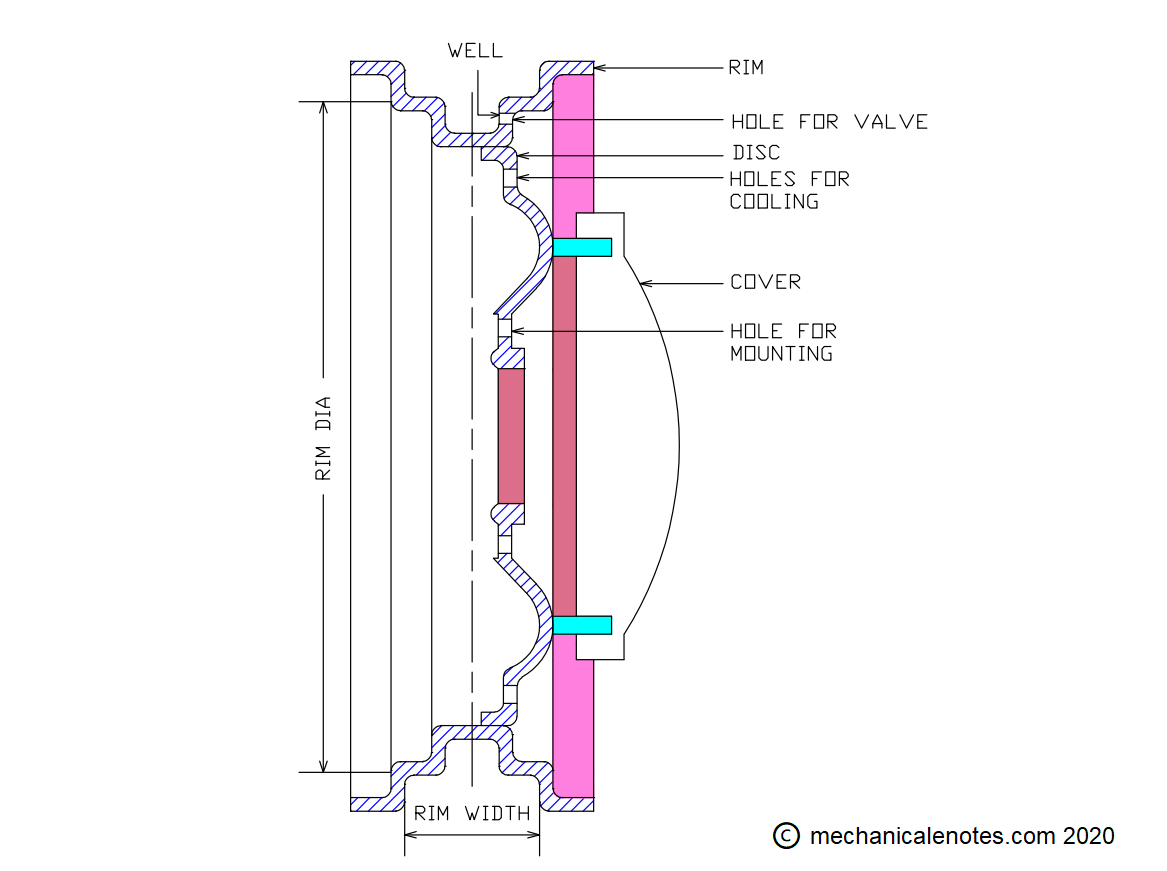
It is possible to mount or remove the tyre from the wheel with the help of well only, else it is not possible.
It is possible to pass the tyre over the opposite edges of the rim, when the bead of the tyre is resting in the well.
The steel disc is used for the functioning of spokes. The wheel is fitted along with the tyre onto the axle by tightening nuts onto the mounting studs which are fixed on the flange.
Some holes or slots are generally provided in the wheel disc in order to allow the air to the inner side of the disc for better cooling of the brake drum.
Especially for heavier vehicles like trucks, buses etc.which are bulkier and doesn't fit in the well region. Therefore,the well rims are not used for them.
Rather, flat based rims are generally used which may be of 2 piece/3 piece/4 piece or 5 piece in construction.
In these type of wheels, the loose flange and the lock ring has to be removed first to remove the tyre and these rims will be used only by tubed wheels.
Advantages of Pressed Steel Disc Wheel:
This type of wheel has following benefits:
- Robust construction
- Simplicity
- Ease of cleaning
- Lower cost of manufacturing
- Less maintenance
- High production
Applications of Pressed Steel Disc Wheel:
These wheels are used in heavy motors like buses and trucks.
2. Wire Wheel:
It is lighter in weight and the heat dissipation will be high.
It can be mounted and removed from the axle easily.
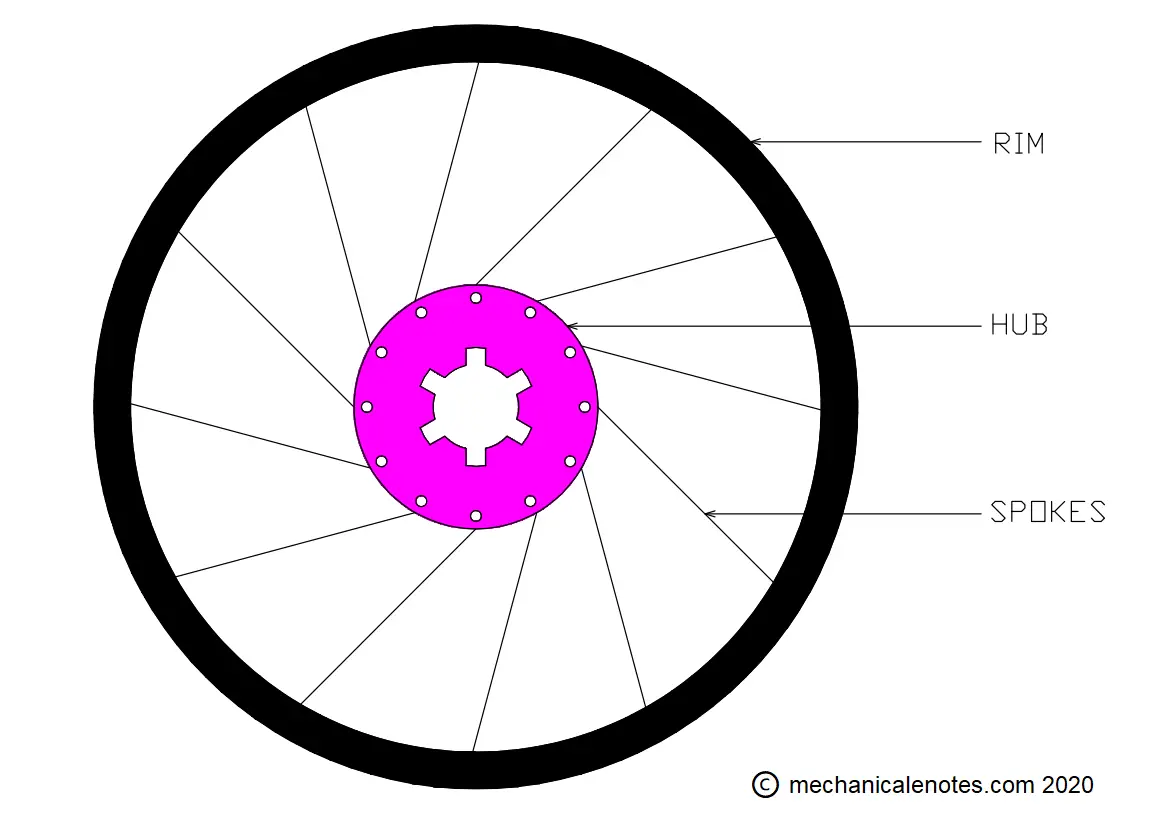
Parts of Wire Wheel:
The wire wheel consists of the following parts:
- Steel Rim
- Spokes
- Hub
Steel Rim:
This type of wheel is generally used to receive the tyre.
Hub:
The wire wheel has a separate hub which is attached to the rim and a number of wire spokes are attached to it within the disc.
Spokes:
Each spoke is fitted at one end of the hub while the other end is pushed through a hole in the wheel rim.
A tapered nut called nipple, is screwed down pulling the spoke tightly.
Make sure that spoke should not be too loose or too tight, else the rim would distort.
The spokes carry the weight of the vehicle and can transmit the driving torque and the breaking torque and also withstand the side forces while moving on corners under tension.
The spokes are mounted in a Criss-cross fashion which are long and thin wires doesn't carry any compressive or bending stress but they are always sustained under tension.
Advantages of Wire Wheel:
- This type of wheels can be used for tubed tyres only.
- Heat dissipation takes place to the surroundings by means of spokes fitted in the rim.
Disadvantages of Wire Wheel:
- The tubeless tyres cannot be fitted over wire wheels.
- These wire wheels are difficult to clean.
Applications of Wire Wheel:
- This type of wheel was used in earlier days but it's use is limited for racing cars and vintage cars.
- Before 5 yrs from today, the wire wheel will be used in bikes also.
- Traditionally, it is much used in bicycles also.
3. Light Alloy Cast Wheel or Forged Wheel:
The latest trend in the case of automobile wheels, was the usage of wheels made by aluminium alloys or magnesium alloys.
The strength of the forged wheel is very high compared to the cast wheel.

Therefore, light alloy cast wheels will be used in cars whereas forged wheels will be used in heavy vehicles.
Light alloy wheels are better conductors of heat which helps the wheels to dissipate the heat which is generated by the tyres or brakes.
The forged wheels and the cast wheels have to be machined to produce better appearance.
Advantages of Light alloy Wheels:
- The main advantage of light alloy wheels is, it weighs about 50% of Steel wheel and 70% of Aluminium alloy wheel for similar strength.
- Wider rims are possible in this case of light alloy wheels in order to improve the stability on cornering.
- Magnesium alloys have the properties of high impact and fatigue strength so that they can withstand the vibrations and the shocks during loading.
Disadvantages of Light alloy Wheels:
- Magnesium alloys are prone to corrosion and therefore some protective coating has to be given to it.
- Higher cost is the biggest disadvantage of light alloy wheels compared to other wheels mentioned above.
Applications of light alloy wheels:
Aluminium alloys are used for the wheels of cars and commercial vehicles whereas the magnesium alloy wheels are used for sports and racing cars.
This is the detailed explanation on different types of wheels. So, let's discuss about the Types of Tyres in detailed along with its advantages.
4. Divided Rims Wheel:
As the name itself indicates that the wheels are divided into two halves and are joined together by means of bolts.
While the tyre is inflated where the rims must not be seperated. The only advantage of the divided rims wheel is that they are assembled and disassembled very easily.
5. Split Rims:
Split rims are used in larger vehicles like trucks, buses, forklifts etc. but not in cars or light vehicles.
They are generally multi-piece wheels, where by the help of locking ring the tyre is adjusted in a place.
This is a detailed explanation of various types of wheels. Now, let's discuss tyres and their properties, functions, etc.
What is Tyre?
A tyre is a cushion provided within the wheel of an automobile.
Functions of Tyre:
- To support the load of the vehicle.
- To transmit the braking and driving forces to the road.
- For smooth steering, cornering power is provided.
Properties of Tyre:
The properties of tyre are as follows.
Cushioning Effect:
The tyre should be in a position to absorb the vibrations set up by the uneven road surface by providing cushioning effect to make the ride smoother.
Non-skidding:
This is one of the important property of the tyre which makes the vehicle not to skid even on the wet road and this can be possible by designing a proper tread pattern on the tyre.
Load carrying ability:
When the vehicle is running on uneven or even roads, the tyres experience alternating stresses during the each revolution of the wheel. The design and the material of the tyre must be good enough to sustain the load properly.
Uniform wear:
The non-skidding property is maintained by the uniform distribution of wear on each wheel.To achieve this, the ribbed tread patterns will be used.
Parts of Tyre:
The parts of a tyre are as follows.
- Tire belts
- Tire Tread
- Tire sidewall
- Tire shoulder
- Tire grooves
- Tire bead
- Tire plies
Chemical Compounds of Tyre:
In the current era, the tyres are made up of rubber mixed with other constituents to have an impact on tyre w.r.t. strength, durability and temperature resistance.
The chemical compounds used for the preperation of rubber are
- Sulfur
- Carbon black
- Synthetic rubber
- Silica
Types of Tyre:
In general tyres are classified into two categories, those are:
- Conventional Tubed Tyre
- Tubeless Tyre
1. Conventional Tubed Tyre:
As the name indicates that it has a tube within the tyre and rim assembly.

It generally consists of the following parts:
- Rim
- Tube
- Tyre
Rim:
It is the steel material which is used to hold the tube and the tyre on it so that it can withstand the load of the vehicle. It has a hole on its circumference to allow the tube valve through it.
Tube:
It is the material made of rubber and it consists of a valve which is pressurized by means of air so that it can bulge according to the need and can fit into the tyre properly.
It has the disadvantage that, whenever there is a puncture then the air will be lost suddenly from the tube, tyre and the valve region also.
Tyre:
It is the material made up of rubber and acts as the major part of automobile. The power from the engine is to be transmitted to the wheels via axles such that the vehicle can move smoothly.
It consists of Treads separated by grooves on its circumference such that they can act as a friction between the road and the tyre.
Working of Conventional Tubed Tyre:
- The tube is placed between the tyre and the rim properly such that the valve of the tube can pass through the hole of the rim.
- Then the air is pressurized into the tube up to the desired value such that it can run on the road properly.
- Make sure that the air in the tube is up to the desired value described by the manufacturer. If the air is less, then the vehicle moves slowly.
- If the driver does not know about this, then he can apply the pressure on the accelerator so that the vehicle can move fast which decreases the fuel in the vehicle.
- So the air is to be filled up properly before driving it onto the road.
2. Tubeless Tyre:
As the name indicates that it does not have a tube within the tyre and rim assembly as per the physical structure.
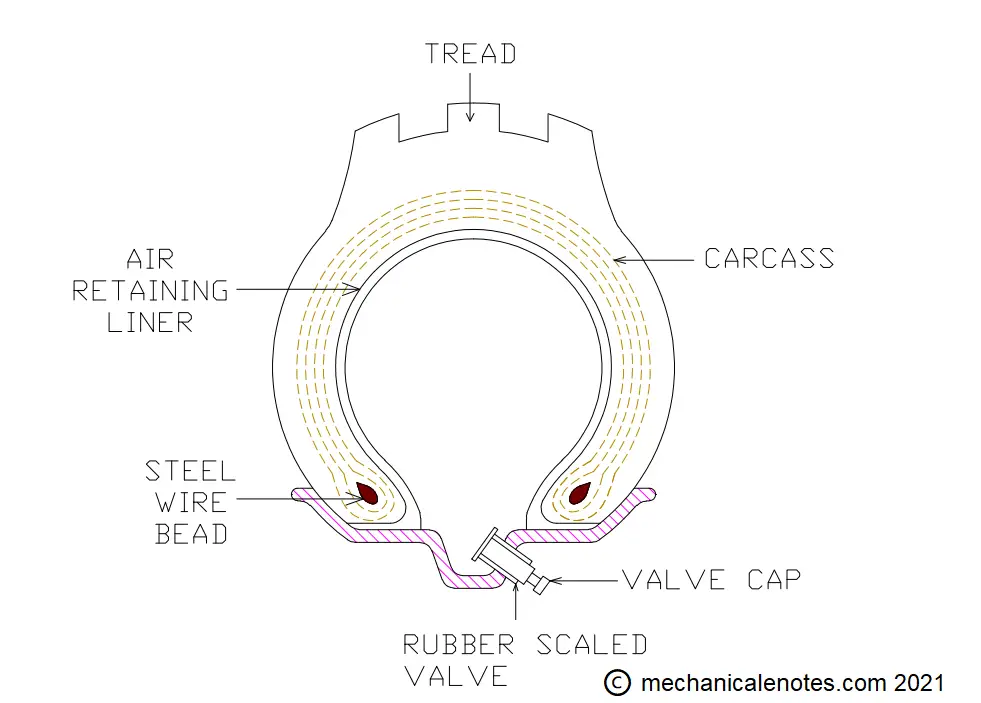
But the tube is an integral part of the tyre as it is lined on inside with a special air-retaining liner made up of halogenated butyl rubber-like bromobutyl or chlorobutyl for better air impermeability with high heat and weather resistance.
The purpose of the bead in the tyre is to stabilize the tyre and also serve to maintain the air pressure within.
The valve cap is used to pressurise the air into the tyre so that the vehicle moves faster.
Reduction in the air in tube or tubeless tyres reduce the mileage of the vehicle because the system requires more effort to move the vehicle.
If the puncture happens during driving then the air loss will not takes place suddenly compared with the tubed vehicles.
But tyre can be classified as several more ways, let me discuss those too.
First, let me show you the classifications of tyres based on Types of Carcass:
- Bias Ply tyre
- Belted Bias tyre
- Radial Ply tyres
Bias Ply tyre:
- The construction of Bias Ply Tyre is one of the oldest type.
- Various plies are added one on the other and are dependent upon the cross section of the tyre and the load that it can carries or holds.
- Due to this, the cushioning effect will be increased and there will be a safer ride on rough roads too.
Belted Bias tyre:
- In order to increase the stiffness of the tread, Bias-Ply tyres are loaded with belts and hence the name Belted Bias tyre.
- The belts can lay under the tread area only but not around the sidewalls.
- In addition to the plies in the Bias-ply tyre, the belts and plies run across each other in the Belted bias tyre.
- Due to this, there will be a smoother ride and good traction.
Radial Ply tyres:
- In Radial Ply tyres, the plies can run in radial direction i.e. in the direction of the axis of the tyre.
- In a circumferential direction, a number of breaker strips can run on the basic structure and without them, the radial plies will not have lateral stability but having a soft ride.
Also if we consider grooves of tyre, then it classified as follows:
- Directional tyres
- Non-directional tyres
Directional Tyres:
The directional tyres are designed in such a way that they can be rolled only in one direction.
Non-Directional Tyres:
The non-directional tyres are designed in such a way that they will perform opposite to directional tyres i.e. they can rotate in either direction regardless of the road directions with equal performance.
Now, let's see the main types of tyres as Conventional Tubed tyres and Tubeless tyre and are as follws.
Advantages of Tubeless Tyres over Tubed Tyres:
The advantages of Tubeless Tyres over Tubed Tyres are as follows.
Better cooling for increase in tyre life:
As in the case of a tubeless tyre, heat will be passed out to the atmosphere very easily because there is no tube within the tyre whereas, in the case of tubed tyres, heat in the compressed air has to pass through the tube (rubber) material which is not a good conductor of heat. Thereby the life of the Tubeless tyres is more compared with the Tubed tyres.
Lesser rolling resistance:
Due to the presence of tube in tubed tyres, the friction is more between the tyre, tube and rim whereas, in the case of tubeless tyres, there is less rolling resistance because of the absence of tube within the tyre.
Comfortable ride:
In the case of tubeless tyres, the vibrations and shocks will be absorbed at the level of tyre only. Thus it makes the ride more comfortable.
Leakage of air:
In the case of a tubed tyre, when there is a puncture then the air will be lost suddenly from the tube resulting in the unbalance of the vehicle. Whereas, the inner liner in the tubeless tyres is not stretched like a tube and retains the air which results in the slower leakage.
Simpler assembly:
As there is no danger of the tyre puncture or tyre burst takes place in the tubeless tyres and Just the tyre has to be fitted on the rim.
Sidewall Markings on Tyres:
The markings on the sidewalls of the tyres are as follows.
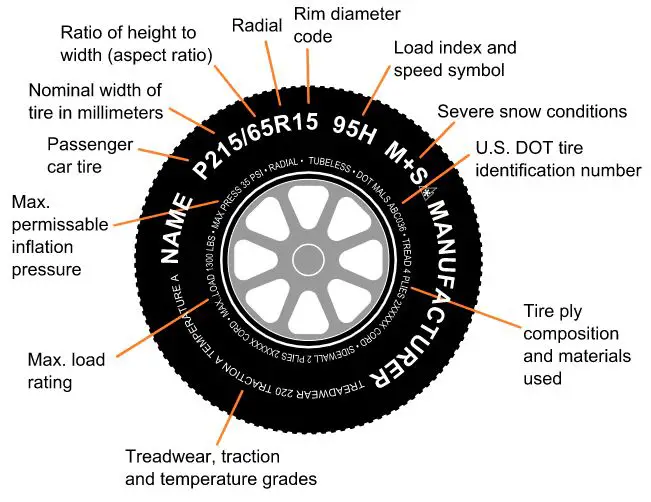
- Brand Name: The company name will be there on the tyre. Ex: MRF, Apollo, etc.
- Manufacturing Country: Whichever country manufactures that tyre, their country name was printed on the sidewalls of the tyre.
- Maximum load rating
- Rim specifications
- Passenger or Transport tyre
- To which weather conditions, the tyre can opt.
Defects in Tyres:
The defects in tyres are as folows.
- Tread seperation
- Bead failure
- sidewall failures
- continuous punctures on the same spot.
- manufacturing defects
- belt and tread seperation
- During mounting process, the tyre may be damaged
This is a detailed explanation of Wheels and Tyres along with its types, advantages, disadvantages, and applications. If you have any doubt, feel free to contact us from the comments section.
More Resources:
Types of Axles: Front Axle, Rear Axle and Stub Axle [PDF]
Types of Chassis in Automobile [PDF]
Types of Fuel Supply System in Petrol Engine [PDF]
References [External Links]:
- (PDF) Metallurgical investigation of wire breakage of tyre bead
- Passive wireless strain monitoring of tyres using capacitance and tuning frequency changes-PDF


